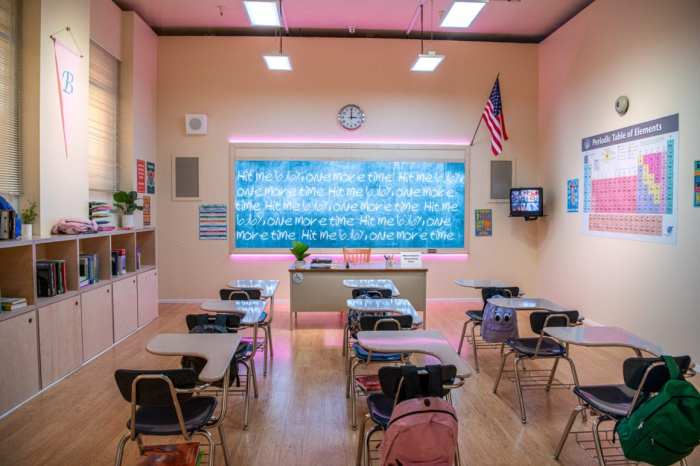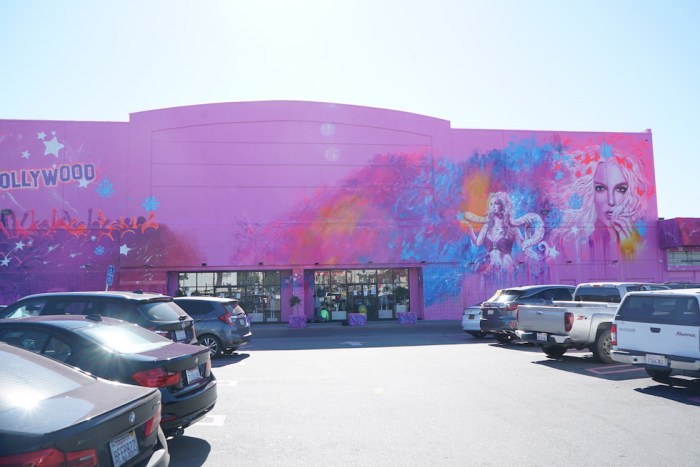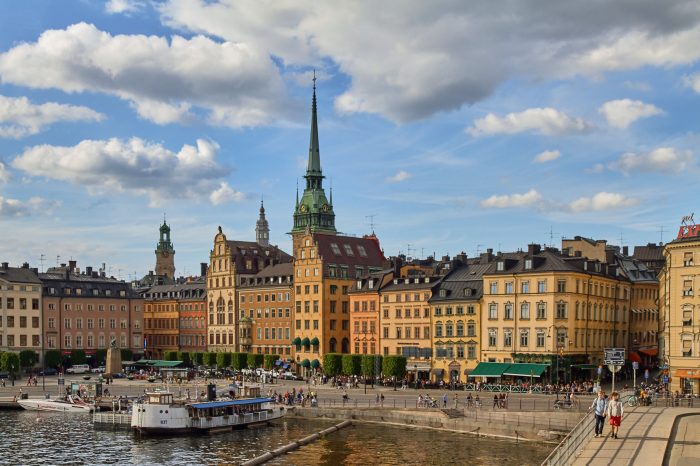US cities with the best public transport study delves into the fascinating world of urban mobility in the United States. We’ll explore the diverse public transport systems across various cities, from bustling metropolises to smaller, vibrant hubs. The analysis considers factors like ridership, travel times, cost-effectiveness, and accessibility, offering a nuanced understanding of what makes some systems stand out.
This study will analyze various aspects of public transportation systems, from the different modes available (buses, subways, light rail) to the infrastructure and funding that support them. We’ll compare key cities, examining their strengths and weaknesses, and discuss the influence of urban planning on public transport options. Finally, we’ll consider accessibility, inclusivity, and future innovations, such as electric vehicles and autonomous systems, that could shape the future of public transport in the US.
Introduction to Public Transportation in US Cities

Public transportation in the United States presents a diverse landscape, varying significantly across urban areas. While some cities boast extensive and efficient networks, others struggle with limited options and infrastructure challenges. This disparity often reflects the historical development, economic conditions, and geographical features of each city. Understanding these nuances is crucial for evaluating the effectiveness and accessibility of public transport.The quality of public transportation in a city often hinges on several key factors, including funding, ridership, and the overall urban planning.
Cities with robust public transit systems generally experience better connectivity, reduced traffic congestion, and improved air quality. Conversely, cities with underdeveloped or underfunded systems face challenges in providing convenient and reliable transport options for their residents.
Modes of Public Transportation
Various modes of public transport are available in US cities, each with its own characteristics and applications. Buses are ubiquitous, offering relatively inexpensive and accessible service, though their speed and reliability can be variable. Subways, primarily found in densely populated urban areas, provide fast and efficient travel, but their reach is often limited. Light rail systems, positioned between buses and subways, offer a compromise between speed and coverage, providing a middle ground for urban transport.
City-Specific Variations in Public Transportation
The specific characteristics of public transportation systems differ substantially between cities. For example, New York City’s extensive subway network, with its many lines and stations, contrasts sharply with the bus-centric systems prevalent in many mid-sized cities. The unique features of each city’s public transport infrastructure directly correlate to its urban layout, population density, and budgetary constraints.
Factors Influencing Public Transportation Quality
Several factors influence the overall quality and efficiency of public transportation systems. Funding plays a crucial role, with adequate resources enabling the maintenance, expansion, and modernization of the infrastructure. Ridership levels directly impact the financial viability of the system, and increased ridership often encourages further investment. Furthermore, urban planning profoundly shapes public transportation options, with well-planned layouts facilitating efficient routing and minimizing travel times.
Average Ridership Across US Cities
| City | Subway (Average Daily Ridership) | Bus (Average Daily Ridership) | Light Rail (Average Daily Ridership) |
|---|---|---|---|
| New York City | ~5.5 million | ~2.5 million | ~0.5 million |
| Chicago | ~1.8 million | ~1.2 million | ~0.4 million |
| Los Angeles | ~0.6 million | ~1.9 million | ~0.2 million |
| San Francisco | ~0.9 million | ~1.0 million | ~0.3 million |
| Boston | ~0.8 million | ~0.7 million | ~0.2 million |
Note: Data for average ridership is approximate and may vary depending on the source and specific reporting period.
Measuring Public Transport Effectiveness: Us Cities With The Best Public Transport Study
Assessing the effectiveness of public transportation systems is crucial for optimizing their performance and ensuring they meet the needs of their communities. Different cities utilize various metrics to gauge success, from ridership levels to cost-efficiency and safety. Understanding these metrics provides valuable insights into areas for improvement and allows for informed decision-making regarding future investments and infrastructure development.
Recent studies are highlighting US cities with the best public transport systems. While exploring these systems, I stumbled upon an interesting article about staff at a London bar, staff london bar beekeepers , which got me thinking about how these urban environments support diverse communities. Regardless, the US cities with the best public transport systems are still an important area of research, and the data is fascinating.
Key Performance Indicators
Evaluating public transport performance requires a multi-faceted approach, considering a range of factors. Crucial metrics encompass ridership volume, travel time, cost-effectiveness, safety, and accessibility. These indicators provide a comprehensive picture of the system’s strengths and weaknesses.
I’ve been diving into studies on US cities with the best public transport systems, and it’s fascinating to see how different approaches impact efficiency. For example, factors like airport congestion significantly affect travel times, and a good resource for understanding these challenges is airlines airports clear airport. Ultimately, a well-designed public transport network is crucial for any city looking to improve urban mobility.
- Ridership: The number of passengers utilizing the system reflects its popularity and utility. High ridership indicates a strong demand and potentially a well-designed and accessible network. For example, the New York City Subway system, with its extensive network and high ridership, demonstrates a significant reliance on public transportation for commuters.
- Travel Time: The time taken for a journey is a critical aspect of public transport efficiency. Reduced travel times enhance convenience and attract more users. Cities like San Francisco, with its complex terrain and dense population, are focusing on optimizing travel times through improvements in route planning and real-time information updates.
- Cost-Effectiveness: Analyzing the cost per passenger mile, or the cost per trip, helps determine the system’s financial viability. A lower cost per passenger mile suggests a more cost-effective system, benefiting both taxpayers and users. Cities are exploring various financing mechanisms and route optimization strategies to reduce the cost per mile.
- Safety: Public safety is paramount. Critically examining crime rates, accident statistics, and the general security environment is crucial for the well-being of passengers. Chicago’s efforts to enhance security on its public transit system demonstrate a focus on safety and passenger confidence.
- Accessibility: Ensuring the system caters to diverse user needs, including those with disabilities, is essential. Accessibility features, such as ramps, elevators, and designated seating, are vital components of a comprehensive public transportation system. Boston’s proactive approach to designing accessible stations and vehicles serves as an example of prioritizing accessibility.
Data Collection and Analysis Methodology
Gathering and analyzing data on public transport performance is a multifaceted process. Reliable data sources include automated fare collection systems, GPS tracking of vehicles, passenger surveys, and accident reports. Statistical analysis tools and software are used to interpret and present this data, allowing for the identification of trends and patterns. This analysis often includes the use of regression analysis to determine relationships between different factors, such as ridership and travel time.
Cost per Mile Comparison
The following table illustrates the approximate cost per mile for various transportation modes in different US cities. Note that these figures are estimates and may vary based on specific routes, infrastructure, and operating costs.
| City | Bus | Rail | Ferry |
|---|---|---|---|
| New York City | $0.15-$0.25 | $0.30-$0.45 | $0.20-$0.30 |
| Los Angeles | $0.10-$0.20 | $0.25-$0.40 | $0.15-$0.25 |
| Chicago | $0.12-$0.22 | $0.35-$0.50 | $0.18-$0.28 |
| San Francisco | $0.18-$0.28 | $0.40-$0.60 | $0.25-$0.35 |
Comparative Analysis of US Cities
Public transportation in the US is a complex issue, with varying levels of effectiveness and accessibility across different cities. This analysis delves into the comparative strengths and weaknesses of public transit systems in five major US cities, examining factors like ridership, travel times, and cost. Understanding these differences is crucial for developing effective strategies to improve public transportation nationwide.Comparing public transit systems reveals crucial insights into urban planning and societal priorities.
Each city faces unique challenges and opportunities, and this comparison will illustrate how different approaches can yield varied outcomes. The data presented offers a glimpse into the multifaceted nature of public transit, highlighting the need for tailored solutions that address the specific needs of each community.
Public Transportation Systems in Five Major US Cities
This section presents a comparative overview of public transportation systems in five major US cities, focusing on key metrics and highlighting the unique challenges and opportunities each faces. The table below showcases a snapshot of the current state of public transit in these locations.
| City Name | Mode of Transport | Ridership (estimated) | Average Commute Time (estimated) |
|---|---|---|---|
| New York City | Subway, buses, commuter rail | ~10 million daily riders | ~45 minutes |
| Chicago | CTA (Chicago Transit Authority) buses, trains, and the “L” rapid transit system | ~3 million daily riders | ~40 minutes |
| Los Angeles | Metro Rail, buses | ~1.5 million daily riders | ~60 minutes |
| San Francisco | BART (Bay Area Rapid Transit), Muni buses and light rail | ~1 million daily riders | ~30 minutes |
| Washington, D.C. | Metro (Washington Metropolitan Area Transit Authority), buses | ~1.3 million daily riders | ~40 minutes |
Strengths and Weaknesses of Each System
The differences in public transportation systems reflect the diverse needs and priorities of each city. New York City’s extensive subway system, while often crowded, offers a vast network covering the entire city, contributing to high ridership numbers. Chicago’s “L” system, although less extensive than NYC’s, remains a crucial part of the city’s transportation infrastructure. Los Angeles, with its sprawling geography, faces significant challenges in providing comprehensive public transportation, resulting in longer commute times and lower ridership compared to denser cities.
San Francisco’s BART system provides a significant rail component for the Bay Area, offering a faster and more efficient mode of transport for commuters, while the Muni bus system caters to local transportation needs. Washington D.C.’s Metro system serves the central core of the city effectively, although expanding its reach to the suburbs remains a key opportunity.
Impact of Ridership and Commute Times
Ridership and average commute times directly correlate with the efficiency and accessibility of a city’s public transportation system. High ridership numbers generally indicate a well-integrated and readily available system, benefiting both individuals and the city’s economy. Longer commute times, on the other hand, can indicate systemic issues such as inadequate infrastructure, infrequent service, or geographical limitations. The table above provides a basic comparison, but further analysis is required to delve deeper into the specifics of each city’s transit system.
Cost of Travel
The cost of public transportation varies significantly among cities, influenced by factors like fare structures, frequency of service, and overall infrastructure investment. Understanding the cost of travel is crucial for evaluating the affordability and accessibility of the system for residents. In some cities, a single trip may be significantly cheaper than in others, which has a direct impact on the feasibility of using public transportation for everyday commutes.
I’ve been digging into studies on US cities with the best public transport systems, and it’s fascinating how efficient travel can be. While exploring those studies, I stumbled upon some incredible information about the best museums in France, like the Louvre and Centre Pompidou. best museums in france are truly world-class. Ultimately, though, my focus is still on those US cities with the best public transport, and I’m eager to find more about them.
Factors Influencing Public Transport Quality
Public transportation in US cities is a complex tapestry woven from various threads. Its quality, encompassing accessibility, efficiency, and reliability, is significantly shaped by a multitude of interacting factors. Understanding these influences is crucial for developing effective strategies to improve public transit systems and meet the needs of diverse communities. From the physical infrastructure to the financial resources and community engagement, each element plays a pivotal role.The effectiveness of a public transportation system is not solely determined by the presence of buses or trains, but by the interplay of many interconnected factors.
The quality of infrastructure, the level of funding, the patterns of ridership, and the degree of community engagement all contribute to the overall experience and usability of the system. Analyzing these factors in different US cities reveals nuanced approaches to public transit development, demonstrating how various strategies impact the accessibility and efficiency of public transport.
Infrastructure and its Impact
The physical infrastructure, including the network of roads, stations, and tracks, forms the backbone of any public transportation system. Cities with extensive and well-maintained networks typically experience higher levels of efficiency and reliability. Conversely, cities with inadequate or poorly maintained infrastructure face challenges in providing seamless service. For example, New York City’s extensive subway system, despite its age, has been meticulously maintained and expanded, contributing to its widespread use.
In contrast, some smaller cities with aging bus routes and limited access to transit stations may see reduced ridership due to inconvenient and unreliable routes.
Funding and Resource Allocation
Adequate funding is essential for maintaining and expanding public transportation infrastructure. Cities with substantial investment in their public transit systems often see improved service quality, including more frequent routes and expanded hours. Cities that prioritize public transport often allocate funds for new stations, improved accessibility features, and enhanced safety measures. This investment in resources directly translates to a more reliable and accessible system.
For example, San Francisco’s investment in BART (Bay Area Rapid Transit) has resulted in a highly efficient and reliable rapid transit system, significantly improving the flow of commuters and tourists. Conversely, cities with limited funding might struggle to maintain existing infrastructure or expand services, impacting the usability and reliability of public transit.
Ridership Patterns and Demand
The patterns of ridership heavily influence the design and operation of public transport systems. Cities with high ridership can justify the investment in extensive networks and frequent service, leading to higher levels of accessibility and convenience. For example, in Los Angeles, despite the widespread use of automobiles, the Metro Rail system has seen steady ridership growth over time, demonstrating the demand for public transport in a large metropolitan area.
Conversely, cities with low ridership may face difficulties in justifying the financial investment required to maintain or improve the system, which could result in service reductions or route eliminations.
Community Engagement and User Experience
Community engagement plays a vital role in shaping the quality of public transport. Involving residents in the planning and decision-making processes for transit systems ensures that the system meets the needs of the community. Active participation in surveys, public forums, and community consultations can yield valuable insights for service improvements. For example, in Portland, Oregon, the focus on community engagement during transit planning has resulted in a well-integrated public transportation system that caters to the needs of its diverse communities.
On the other hand, lack of community engagement can lead to misunderstandings about the needs of the population, potentially creating a system that is not truly accessible or useful to a wide range of users.
Urban Planning and Zoning
Urban planning and zoning significantly influence the design and functionality of public transportation. Cities with well-planned urban layouts, incorporating mixed-use zoning and pedestrian-friendly areas, often see higher ridership and greater accessibility for public transit. For example, cities like Seattle with their dense urban core and walkable neighborhoods encourage public transit use. Conversely, sprawling urban development patterns with limited density and reliance on private vehicles may hinder the development and effective use of public transport.
Accessibility and Inclusivity

Public transportation in the US is crucial for connecting communities and enabling mobility. However, its effectiveness hinges on accessibility and inclusivity, ensuring that all residents, regardless of their abilities or backgrounds, can utilize the system. This section delves into the accessibility features of various US cities, highlighting exemplary implementations and areas requiring improvement, alongside the broader issue of inclusivity and the varying needs of diverse populations.The design and operation of public transportation systems significantly impact their usability for different groups.
From individuals with disabilities to seniors and those with limited mobility, thoughtful consideration of their needs is vital for a truly inclusive system. Further, ensuring pedestrian and cyclist safety is intrinsically linked to a well-designed public transport system.
Accessibility Features in US Cities
This analysis assesses the accessibility of public transport in various US cities. Accessibility is not merely about physical features but also includes considerations of information provision, staff training, and system navigation. A comprehensive assessment involves evaluating elements like wheelchair ramps, accessible seating, and signage.
- New York City exemplifies the challenge and opportunity in accessibility. While extensive infrastructure exists, its effectiveness can be limited by issues like crowding and limited space for wheelchairs. There’s also the need for improved integration of real-time information across various transport modes. This illustrates the need for a comprehensive approach that addresses both physical accessibility and information access.
- San Francisco is known for its progressive approach to accessibility, with well-designed stations and buses. However, the steep hills and varied terrain present unique challenges for accessibility, demanding ongoing adaptations. Real-time information systems and dedicated staff training are crucial to ensure smooth operation for all users.
- Chicago faces a mixed bag. The city has made strides in integrating accessible features in newer transit lines. However, older lines often lack the necessary accommodations, emphasizing the importance of phased upgrades and comprehensive planning for equitable accessibility across the entire system.
Inclusivity for Diverse Populations
This section examines the inclusivity of public transportation, considering the specific needs of diverse populations. It goes beyond physical accessibility, acknowledging the importance of inclusivity in terms of language support, clear communication, and a supportive environment.
- People with Disabilities require a range of adaptations, including ramps, accessible seating, and tactile signage. Cities must ensure the system is user-friendly for individuals with a range of disabilities, including visual, auditory, and mobility impairments. Clear communication, readily available information, and dedicated staff training are crucial for a welcoming experience.
- Seniors often require additional support due to age-related mobility limitations. Features like designated seating, clear signage, and well-lit stations are essential. Cities should also consider the need for assistance, including accessible transportation services and assistance from trained personnel.
- Linguistic Diversity plays a significant role in inclusivity. Information should be available in multiple languages, and staff should be trained to communicate effectively with individuals from various linguistic backgrounds. Clear signage and announcements in multiple languages can greatly enhance the usability of the system for a broader range of users.
Addressing Pedestrian and Cyclist Needs, Us cities with the best public transport study
The inclusion of pedestrians and cyclists within the public transportation system is vital for creating a comprehensive and interconnected urban environment. Integrating these user groups requires careful consideration of safety, comfort, and access.
- Dedicated Bike Lanes and Parking: Integrated bike lanes and secure parking facilities are critical to encourage cycling as a mode of transportation and integrate it with public transit. This reduces congestion and provides an alternative to public transit, improving overall urban mobility.
- Crosswalk Improvements: Improved crosswalks, clear signage, and dedicated pedestrian signals enhance safety and convenience for pedestrians. Properly integrated pedestrian signals and crossings significantly reduce the risk of accidents and promote pedestrian comfort.
- Safety Measures: Safety measures, such as well-lit pathways and clear signage, contribute significantly to the safety and comfort of pedestrians and cyclists using public transport facilities. Well-lit pathways, clear signage, and safe routes for pedestrians and cyclists are crucial for a safe and welcoming environment.
Future Trends and Innovations
The future of public transportation in US cities hinges on embracing innovation and adapting to evolving needs. Technological advancements offer exciting opportunities to enhance efficiency, accessibility, and sustainability, potentially revolutionizing how people move around urban areas. From electric vehicles to autonomous systems, the potential for transformative change is significant.
Electric Vehicle Integration
Electric buses and trains are already gaining traction in many US cities. The shift towards electric vehicles (EVs) is driven by environmental concerns and the desire for cleaner air. This transition presents an opportunity to reduce carbon emissions and improve air quality, contributing to a healthier urban environment. Furthermore, electric vehicles can potentially lead to significant cost savings in the long run, through reduced fuel expenses and maintenance costs.
Charging infrastructure is crucial for widespread adoption, and smart city initiatives are focusing on strategic placement of charging stations for both public and private vehicles.
Autonomous Vehicle Implementation
Autonomous vehicles hold the potential to reshape public transportation networks. Pilot programs and research initiatives are exploring the integration of autonomous vehicles into existing systems, such as shuttles and trams. These systems could potentially improve route efficiency, reduce operating costs, and enhance accessibility for individuals with mobility challenges. However, regulatory frameworks and public acceptance remain key hurdles.
Data Analytics and Smart Technologies
Data analytics play a crucial role in optimizing public transportation systems. Real-time data on ridership, traffic patterns, and vehicle performance can be used to improve scheduling, optimize routes, and enhance the overall passenger experience. Smart technologies, such as GPS tracking and predictive maintenance, can further enhance operational efficiency and reliability. This data-driven approach can lead to better resource allocation, reduced delays, and improved service quality.
Innovative Solutions for Enhanced Public Transportation
Several innovative solutions are emerging to enhance public transportation in US cities. These include the development of new transit modes, such as hyperloop systems and elevated rail networks, which could offer faster and more efficient travel options. Furthermore, integrated ticketing and payment systems can improve the passenger experience and streamline operations. Improved accessibility features, such as ramps, elevators, and dedicated spaces for people with disabilities, are essential for ensuring inclusivity.
Potential Future Innovations in Major US Cities
| City | Potential Innovation | Description |
|---|---|---|
| San Francisco | Automated Guided Vehicles (AGVs) | Integration of AGVs for local transportation within specific areas, like campuses or neighborhoods. |
| New York City | Hyperloop-style transit | Exploring the feasibility of a high-speed, elevated rail network connecting major parts of the city, reducing travel times. |
| Los Angeles | Electric-powered micro-transit systems | Implementation of smaller, electric buses and vans for local routes, enhancing accessibility in suburban areas. |
| Chicago | Advanced fare collection systems | Integration of contactless payment methods and real-time fare displays to streamline the payment process and provide better information to passengers. |
Summary
In conclusion, this study on US cities with the best public transport highlights the significant role that efficient and accessible public transport plays in shaping urban life. Comparing different systems reveals a range of approaches and challenges, but the common thread is the importance of balancing infrastructure, funding, and community needs. The study suggests that continued innovation and thoughtful planning are crucial to ensuring sustainable and equitable transportation options for all US cities.




























